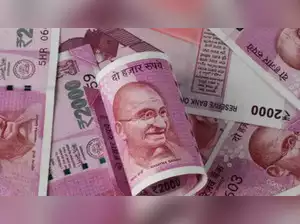In the last 10 years, India has seen a threefold rise in its debt, both domestic and external. As of March 2024, India’s total debt is estimated to have increased sharply from about ₹50 trillion in 2014 to nearly ₹150 trillion. This dramatic rise in debt highlights the challenges and opportunities of the country’s growing economy.
While the debt surge has helped India finance infrastructure projects, social welfare schemes, and economic stimulus during crises like the COVID-19 pandemic, it has also raised concerns about fiscal sustainability, inflationary pressure, and repayment capacity.
Overview of India’s Debt Growth
India’s total debt is broadly classified into two categories: domestic debt and external debt. Domestic debt accounts for the majority of the overall debt, while external debt — borrowed from international creditors — also plays a significant role in the country’s financial framework.
In 2014, India’s total debt was around ₹50 trillion, of which public debt (government liabilities) constituted a significant share. However, by 2024, total debt skyrocketed to ₹150 trillion, driven by increased government borrowing, corporate loans, and a growing reliance on external financing.
Key factors contributing to this rise include:
- Government borrowing: The central and state governments have increased borrowing to finance infrastructure, defense, and social schemes, particularly during economic downturns.
- External borrowing: India’s external debt has also risen significantly to $663.8 billion by March 2024, a $39.7 billion rise from the previous year .
- Pandemic-driven stimulus: In response to the COVID-19 pandemic, the government introduced massive stimulus packages that required substantial borrowing, leading to a sharp rise in public debt.
- Private sector borrowing: India’s corporate sector has increasingly relied on foreign debt through external commercial borrowings (ECBs), which grew significantly during this period.
Causes Behind the Debt Surge
Several structural and policy-related factors have contributed to India’s rising debt in the past decade.
- Increased Infrastructure Spending: One of the primary drivers of debt is the government’s focus on infrastructure development. Initiatives like Bharatmala, Sagarmala, and smart cities require significant capital expenditure, leading to increased borrowing.
- Fiscal Deficit: India’s fiscal deficit — the gap between government spending and revenue — has been widening for years. The fiscal deficit surged during the pandemic, reaching 9.5% of GDP in FY 2020-21 and remaining above 6% thereafter. To bridge this gap, the government has relied on both domestic and external borrowing.
- Currency Depreciation and Global Interest Rates: The depreciation of the Indian rupee has made it more expensive to service external debt. Additionally, rising global interest rates, particularly in the U.S., have increased the cost of borrowing for Indian firms and the government in international markets.
- COVID-19 Pandemic: The pandemic had a severe impact on India’s economy, with multiple lockdowns and restrictions leading to a slowdown in economic activity. To counteract this, the government launched large fiscal stimulus programs, leading to a surge in public debt. The need for increased health expenditure and unemployment support also contributed to the rise.
Concerns Over India’s Growing Debt
While debt is often necessary to drive economic growth, India’s threefold increase in debt raises several concerns.
- Debt Sustainability: As India’s debt-to-GDP ratio has crossed 85%, there are concerns about whether the country can sustainably manage its debt without affecting growth. High debt levels increase the burden of interest payments, limiting government spending on key areas like education and healthcare.
- Inflationary Pressures: Increased borrowing by the government can lead to inflation, especially when it is funded through printing money or higher public spending. India has already experienced inflationary pressure in the post-pandemic years due to supply chain disruptions and increased energy costs.
- External Debt Servicing: With external debt rising to $663.8 billion, the rupee’s depreciation and volatile global markets could pose risks to India’s ability to service its external debt. A weakening rupee makes it more expensive to repay loans denominated in foreign currencies.
- Credit Rating and Investor Confidence: A high debt-to-GDP ratio can lead to downgrades in a country’s credit rating, which may deter foreign investors. A credit downgrade would increase borrowing costs for both the government and Indian firms, putting further strain on the economy.
Opportunities and the Path Forward
While the debt increase raises concerns, it has also enabled India to accelerate development projects, create jobs, and improve infrastructure. India’s robust economic growth and its potential as a global manufacturing hub offer opportunities to manage this debt effectively.
- Economic Growth as a Solution: If India can maintain a high GDP growth rate (7-8%), the rising debt can be sustained. Economic growth would generate more revenue, enabling the government to repay its obligations while continuing to invest in key sectors like infrastructure, defense, and social welfare.
- Debt Management Reforms: India’s government needs to implement reforms to ensure debt sustainability. This includes improving tax collections, reducing non-productive spending, and curbing subsidies. The recent introduction of the National Monetisation Pipeline (NMP), which aims to generate revenue from under-utilized government assets, is a step in this direction.
- Focus on Exports: To manage external debt, India must focus on boosting exports and reducing dependence on imported goods, especially energy. By promoting sectors like pharmaceuticals, IT, and renewable energy, India can generate foreign exchange to service its external obligations.
- Fiscal Responsibility: The government should continue to adhere to the Fiscal Responsibility and Budget Management (FRBM) Act, which sets targets for the fiscal deficit and government debt, ensuring responsible fiscal management.
Conclusion
India’s debt, which has tripled over the past decade, reflects both the growing ambitions of the nation and the complex challenges it faces. While the rise in debt has helped finance critical infrastructure and tackle economic downturns, ensuring the sustainability of this debt will require careful fiscal management, structural reforms, and a focus on long-term growth. Managing the delicate balance between borrowing and repayment will be crucial to maintaining India’s financial stability and economic growth trajectory in the years to come.
